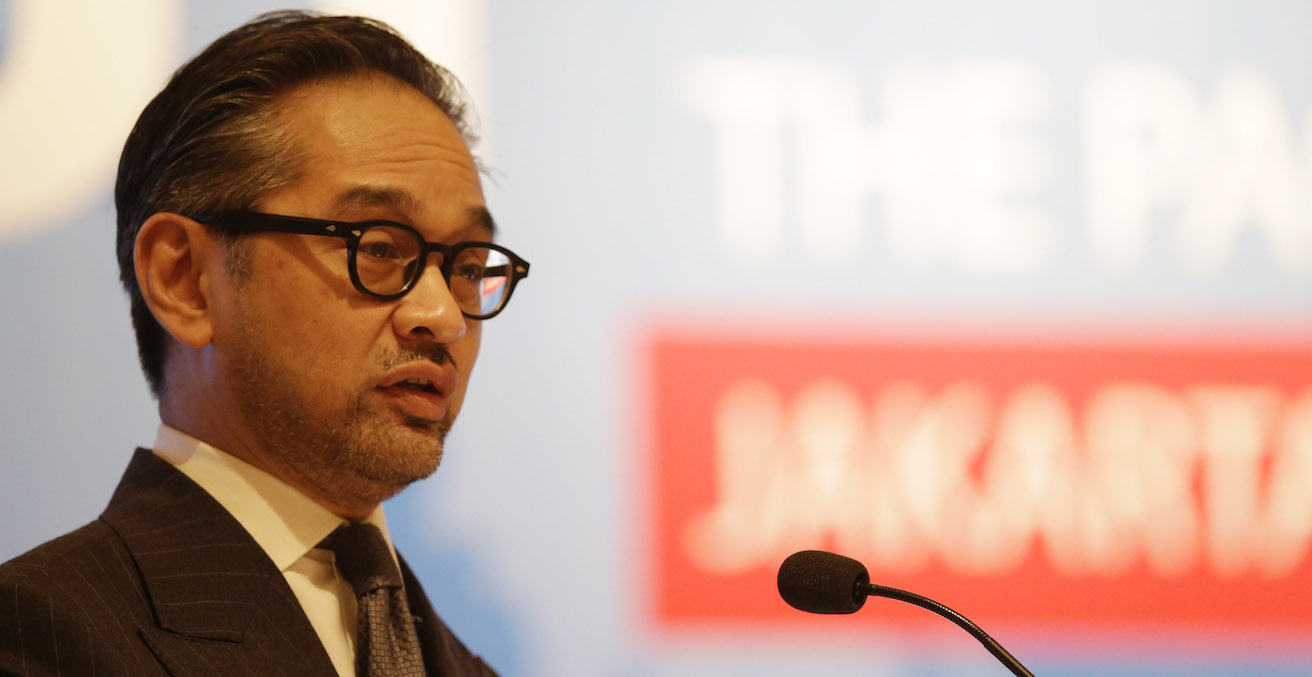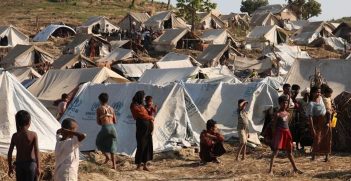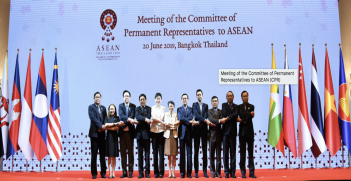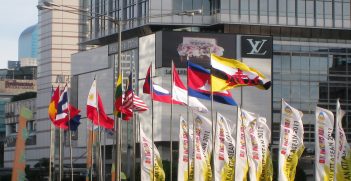The Future of ASEAN

Over five decades, ASEAN has been transformative for Southeast Asian relations, but important changes are required to ensure it remains relevant, including the addition of at least one more member state.
ASEAN really has several choices going forward. It can be simply reactive to the changes happening in the world, reacting to developments in the best way that it could. Or it can be a bit more responsive, not only reacting, but also offering some kind of response to address the problems presenting before it. Or it can be an actual driver for change. Rather than simply reacting, or simply responding, ASEAN becomes the driver for change.
Throughout my career, I’ve always subscribed to the last. Namely, ASEAN must be promoted as a driver of change, anticipating, being transformative, rather than simply being reactive or responsive.
Over five decades, ASEAN has been transformative in its contribution. It has been transformative in at least three ways: transformative in promoting change in the relations between Southeast Asian countries; transformative in changing the place of Southeast Asian countries in the wider region; and, lastly, transformative in promoting the so-called people-centred ASEAN.
But what of the future? I know that with our colleagues in ASEAN we constantly celebrate our anniversaries—the 50th, the 20th, the 10th, and the like—but there’s no room for complacency. Beyond summits, beyond conferences, there is a real need to constantly nurture a sense of community—not only through declarations, but through state practice.
ASEAN now, thanks to five decades of development, has all the wherewithal—all kinds of agreements, declarations, resolutions—but we are still seeing a trust deficit. This not a trust deficit between states, but a trust deficit of the member states towards the very instruments ASEAN has created for itself. There is reticence to enforce ASEAN modalities through ASEAN instruments. So, a lot of these instruments remain in abeyance, left to decay, left to become irrelevant. This will take state practice, individual member states, to utilise these instruments, to reverse the decay.
In terms of intra-ASEAN relations, there is the need to develop a partnership diplomacy rather than transactional foreign policy. Transactional foreign policy, nowadays, has become increasingly popular. In diplomacy and foreign policy you want your immediate return here and now. But if ASEAN member states begin to adopt such a perspective and a sense of a la carte regionalism, I think that is a recipe for further divisions.
The efficacy of diplomacy must continue to be at the forefront of ASEAN’s outlook. And on that note, I believe the ASEAN-10 is an incomplete ASEAN, we need an ASEAN-11. We need Timor-Leste to join and be welcome in the family of ASEAN nations.
In the past, Indonesia has taken a leadership role. It has offered the right type of leadership, well-calibrated and not too much, not too little, hence I believe Indonesia’s leadership, in the future in order to sustain in ASEAN a positive outlook, is essential.
Another transformation is the transformation of the role of ASEAN in the wider region. At the risk of simplification, pre-ASEAN, pre-1967, the Southeast Asian countries were essentially pawns in Asian powers’ proxy and direct dialogues. Not only did we have local and regional divisions, but those divisions were magnified by great power, Cold War rivalry. Through ASEAN we have seen a transformation, we have seen the notion of ASEAN in the drivers seat, in a central role. There has been a fundamental transformation, a sense of deference, by non-ASEAN states, for ASEAN taking the lead and driving the process of regional architecture building.
At the risk of oversimplifying the process, we have seen ASEAN’s development from a notion of neutrality, to a sense of confidence in its capacity to make a difference and the adoption by ASEAN of a transformative outlook towards the wider region. One example that comes to mind is how ASEAN has promoted the concept of the East Asia Summit for the region, encapsulating the Indo-Pacific idea.
But the question now is, what of the future? Can ASEAN, now that it has acquired—has earned—a central role, can it continue to manifest such a position in the wider region? Our region is a region marked by complex dynamics, by trust deficits, by territorialist views, by the challenge of managing the geopolitical and geoeconomic shifts. Unless ASEAN can actually seize the opportunities and address the challenges before it, we will regress from uncertainty to a sense of drift, an ASEAN that simply is not able to respond, react or even anticipate these dangers.
I believe ASEAN must be a little bit more ambitious, a little bit more confident in its ability and its vision for the wider region. We need to demonstrate a relevance beyond convening power. ASEAN is extremely good at convening conferences, their very lively occasions in terms of optics, but what are we offering in terms of ideas? How are we going to tackle the challenge of geopolitical and geoeconomic shifts? How can we recognise the fact that this is indivisible in this part of the world? This is where I find there is a little bit of a lacunae in ASEAN’s conversation.
ASEAN must put its thinking cap on and offer actually what it believes in, otherwise those countries that have deferred to ASEAN’s authority will feel agitated and anxious and they will begin to say we are going to look after our own interests.
ASEAN must now promote the idea of the non-use of force in the wider region—not only Southeast Asia but also in the Indo-Pacific region through the East Asia Summit. And ASEAN must have a crisis management capacity that is more operationally focussed than the usual annual and biannual summits that we have.
Things happen in the world without waiting for summits. So ASEAN must be a little bit more time sensitive, be seen to be proactive, and be seen to be responsive.
Dr Marty Natalegawa was Indonesian foreign minister between 2009 and 2014.
This is an edited extract of a speech he gave in Sydney on 12 March 2018, presented by AIIA NSW in cooperation with the University of Sydney and the Department of Foreign Affairs and Trade.
This article is published under a Creative Commons Licence and may be republished with attribution.





